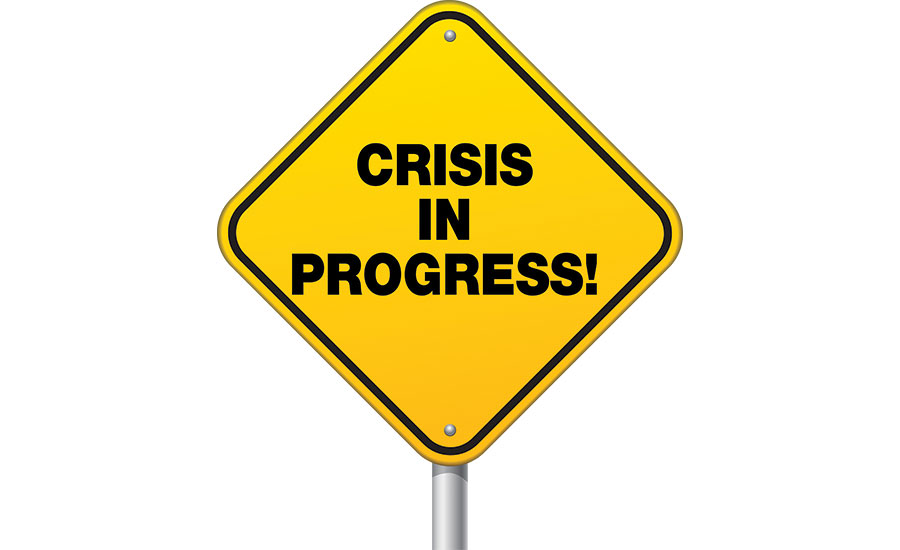 |
| Susan Shelby |
Bodily harm and serious property damage are major risks when dealing with heavy equipment and busy construction jobsites, despite strict adherence to safety priorities and regulations. Construction firms designate ample time and resources to their safety programs, supervisors and training but frequently fail to plan for handling a crisis.
Crisis situations arise daily and can happen to any firm at any time. How a company prepares for, reacts to and recovers from such events will determine its reputation, trustworthiness and, potentially, its livelihood going forward.
Many crises are preventable and recoverable if companies do two simple things: honestly assess and correct their operational risks and prepare and rehearse a crisis communications plan. This plan should determine the roles, protocols and processes so that the company can best control its narrative at a time when getting the story right matters most.
It is important that companies view crisis communications planning as a necessary and strategic part of doing business and conduct preparedness exercises to respond quickly and ethically in a challenging moment. Remember, it is in times of crisis that reputations are either earned or lost.
Before a Crisis
Leaders can prepare for a business-threatening emergency by understanding the company’s goals and operational risks, how it communicates with key stakeholders and whether it needs outside, specialized partnerships to support a crisis response.
 |
| Peter Hillan |
Assess the potential threats and occupational risks and identify the employees, customers and suppliers who would be involved in outreach. Dedicate regular training time for scenarios that are most likely to occur, such as jobsite accidents, data breaches and regulatory hurdles. That preparedness helps to develop muscle memory with internal decision-makers.
Organize a crisis response team (CRT) with a designated crisis manager as the leader, an OSHA safety coordinator and a deputy crisis manager to handle the administrative tasks. Ahead of a crisis, form relationships with a law firm, an IT forensics firm and a communications coordinator, who will manage public relations, traditional and social media, and the website. Create a concisely worded, one-page document that lists the CRT, with contact information as well as brief instructions for handling a crisis.
Update the crisis plan and train regularly. Keep the plan easily accessible in the cloud, augmented with small, laminated print versions for distribution to field staff.
A crisis is not the time to learn how to talk to or establish conduits with stakeholders and the media.
Identify potential spokespeople and arrange for thorough media training. All staff should know how to report a crisis to the CRT, how to identify the crisis manager and where to refer inquiries. Consider creating an email alias to distribute updates to key staff.
During a Crisis
When an accident happens or a critical issue arises, it is time to activate the crisis team and gather information to assess the situation. The company’s goal should be to control its own narrative at a time when others are likely to create competing and less-informed story lines. In short order, companies should do the following:
- Determine which trained spokesperson is best suited for being the public voice—someone to match the gravitas of the situation.
- Inform employees and key partners.
- Maintain active outreach throughout the crisis as new information arrives.
- Instruct staff to refer all calls to the appointed crisis communications coordinator and log all incoming media inquiries, noting time, name, media outlet, phone number, email, follow-up achieved, and any actions that are still needed.
Be prepared for television and radio crews to arrive at the jobsite and company headquarters. Ensure that the designated spokesperson is available and prepared for in-person interviews. Keep information accurate by preparing written statements and a fact sheet to be distributed to media and key stakeholders. Place a priority on responding to all inquiries as soon as possible, maintaining a polite and humble demeanor and expressing genuine sympathy for any victims.
Be accountable if your company bears fault.
Provide stakeholders and the media with as many timely facts as possible. Being the primary source of information will maintain the company’s visibility and its control of the narrative. Be truthful and don’t respond with a “no comment.” Be accountable if your company bears fault. Apologize and explain what happened and what is being done to fix it.
Remember that nothing is truly off the record. Anything in writing should be appropriate for the stakeholders and the media to see, whether the email is responding to an internal or an external email. Work with the company’s law firm to protect and review privileged communications. Track media coverage and request corrections to amend false information as needed.
Commit to responding to any immediate needs created by the crisis and give a detailed description of what steps the company is taking to rectify the situation. Avoid speculation and provide answers to the following questions:
- What happened?
- Who or what is responsible?
- Why did it happen?
- Were there any deaths or injuries?
- What is the extent of the damage?
- Is there any danger of future damage or injuries?
- What is being done about it?
- When will it be over?
- Has it happened before?
- Were there any warning signs?
Today’s world moves at the speed of a tweet. Leverage social media to gauge the sentiments of public reaction as well as disseminate updates. Carefully monitor and participate in online conversations, staying accurate and brief and avoiding emoticons and abbreviations or jargon. Pause or delete any unrelated planned posts that were scheduled to appear on any social media channels.
After a Crisis
When the crisis has passed, everyone breathes a sign of relief. However, the process does not stop here. The recovery phase is a crucial chance to demonstrate a company’s dedication and trustworthiness and reaffirm its reputation. Review stakeholder feedback and media coverage to assess reputational damage and determine what steps need to be taken. It is often best to go “above and beyond” to reassure stakeholders.
Hold an internal debriefing to analyze what worked, what did not work and what should have been done differently, then adjust the crisis communications plan as needed. Distribute the modified plan and consider updated training.
Even with safety precautions and good business practices, accidents do happen. Prepare now to prevent any of them from turning into a reputational crisis.
Susan Shelby is the president and CEO of Rhino Public Relations, a full-service PR and marketing agency focused on meeting the unique needs of professional services firms. Follow her at @RhinoPRBoston or visit www.rhinopr.com.
Peter Hillan is a partner at Banner Public Affairs, a full-service government relations and crisis communications firm. He specializes in managing risk assessment and communications preparedness as well as responses with elected officials, corporate boards, executives and global leaders. For more information about Banner, visit www.bannerpublicaffairs.com.




